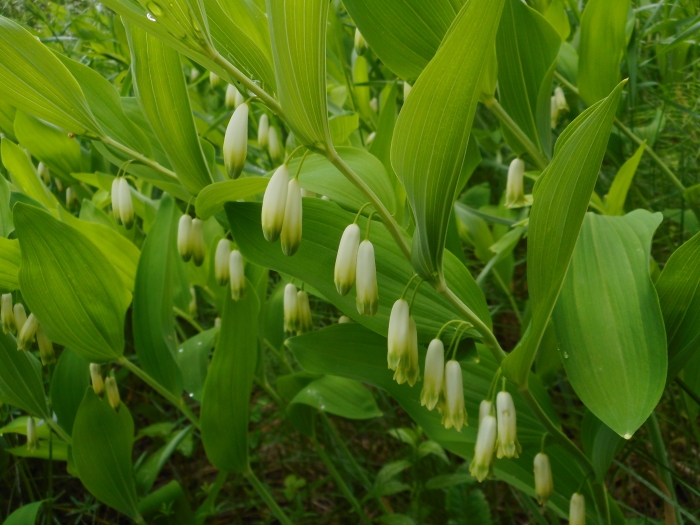Eurasian Solomon’s Seal
(Polygonatum multiflorum)
Eurasian Solomon’s Seal (Polygonatum multiflorum)
/
/

Eugene Popov
CC BY 4.0

















































Estimated Native Range
Summary
Eurasian Solomon’s Seal is appreciated for its arching foliage and delicate flowers, making it a charming addition to shade gardens and woodland plantings. It is often used as ground cover or in border plantings. This plant prefers moist, well-drained soil rich in organic matter and thrives in part shade to full shade conditions. While it is low-maintenance, it can be susceptible to slug damage and may suffer from fungal diseases in overly wet conditions. It is not typically invasive but can spread to form dense clumps if conditions are favorable.CC BY-SA 4.0
Plant Description
- Plant Type: Herb
- Height: 2-3 feet
- Width: 0.667-1 feet
- Growth Rate: Moderate
- Flower Color: Cream, Green, White
- Flowering Season: Spring
- Leaf Retention: Deciduous
Growth Requirements
- Sun: Full Sun, Part Shade
- Water: Medium
- Drainage: Slow, Medium, Fast
Common Uses
Bank Stabilization, Bee Garden, Bird Garden, Butterfly Garden, Deer Resistant, Drought Tolerant, Edible*Disclaimer: Easyscape's listed plant edibility is for informational use. Always verify the safety and proper identification of any plant before consumption., Fragrant, Hummingbird Garden, Low Maintenance, Rabbit Resistant, Showy Flowers
Natural Habitat
Temperate deciduous forests, often in the understory
Other Names
Common Names: Solomon’s-Seal, Garden Solomon’s Seal, David’s Harp, Ladder-To-Heaven, Multi-Flowered Solomon’s Seal, Stor Konval, Stor-Konval, Vielblütige Weißwurz, Vielblütiges Salomonssiegel, Lehtokielo
Scientific Names: , Polygonatum multiflorum, Sigillum salomonis, Convallaria multiflora, Polygonatum intermedium, Polygonatum multiflorum var. bracteatum, Polygonatum salomonis, Polygonatum multiflorum var. ramosum, Polygonatum govanianum, Convallaria broteroi
GBIF Accepted Name: Polygonatum multiflorum (L.) All.